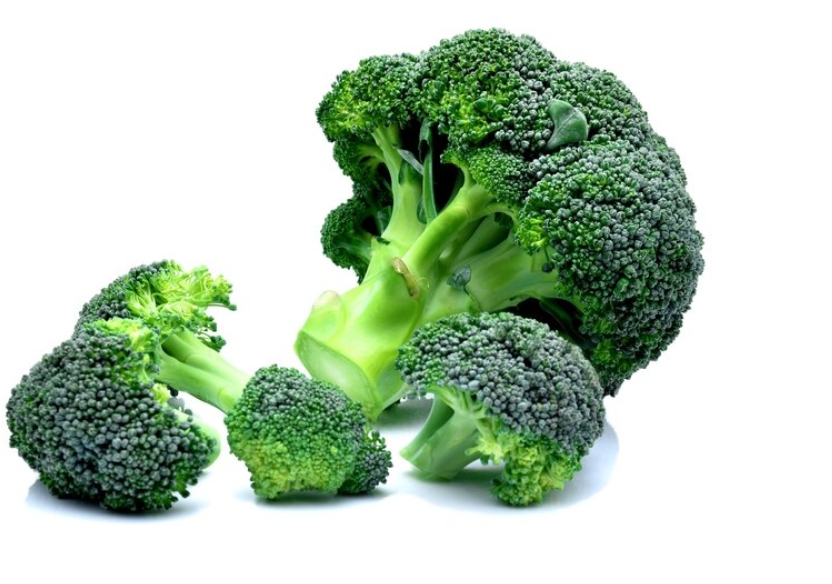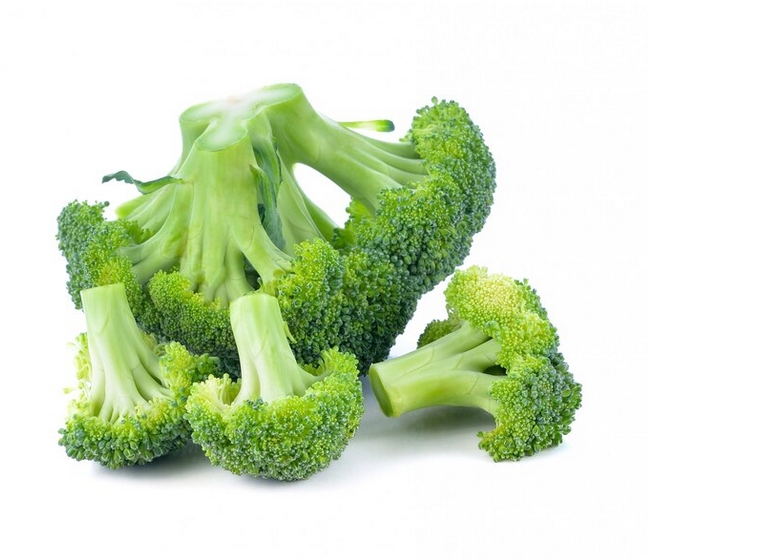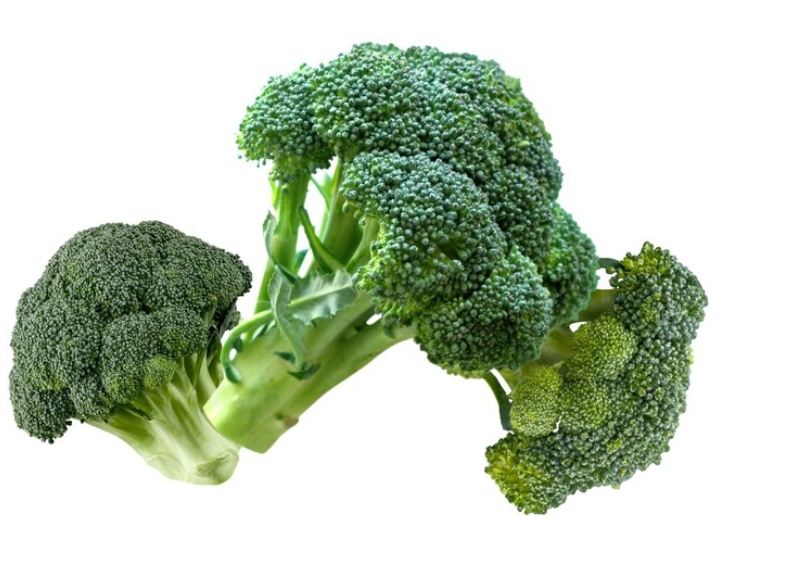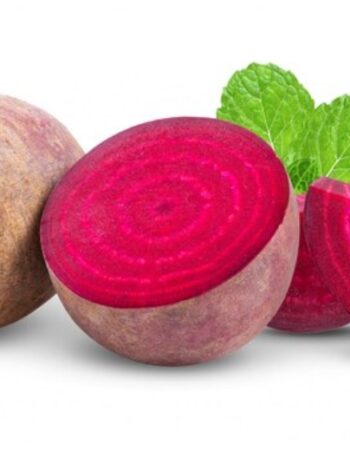The Green Marvel -Broccoli, a green vegetable recognized worldwide for its distinctive tree-like structure, holds a prominent place in global cuisine and agriculture. As a member of the Brassicaceae family, it shares its lineage with other familiar cruciferous vegetables such as cauliflower, cabbage, kale, and Brussels sprouts. Yet, broccoli stands out not only for its unique appearance but also for its versatility and cultural significance. This introduction delves into broccoli’s origins, cultivation methods, varieties, culinary applications, and its broader impact on society.
Origins and Historical Background
Broccoli’s history can be traced back thousands of years to the Mediterranean region, particularly to ancient Italy. It is believed to have been cultivated by the Etruscans, a civilization that predated the Roman Empire. The word “broccoli” is derived from the Italian word broccolo, meaning “the flowering crest of a cabbage,” which highlights the vegetable’s botanical relationship to cabbage.
Broccoli as we know it today began to take shape in the Roman era. Ancient Romans prized broccoli for its flavor and appearance, cultivating it alongside other vegetables in their sophisticated gardens. However, broccoli remained relatively unknown outside of Italy until the Renaissance period, when it began to spread across Europe.
By the 18th century, broccoli had made its way to England and France, where it gained gradual popularity. Its introduction to North America came later, primarily through Italian immigrants who brought their culinary traditions with them. In the early 20th century, broccoli’s cultivation expanded in the United States, particularly in California, which remains the leading producer today.
Botanical Characteristics and Cultivation
Broccoli is scientifically classified as Brassica oleracea var. italica. It is a cool-season crop, thriving in temperate climates with moderate temperatures. Broccoli plants typically grow to about 60–90 centimeters (2–3 feet) in height and produce large flowering heads made up of densely clustered flower buds. These buds form the familiar green “crowns” that are harvested before flowering occurs.
Broccoli grows best in fertile, well-drained soils with a pH between 6.0 and 7.0. Farmers often plant broccoli in early spring or late summer to avoid the extreme heat that can cause premature flowering or “bolting.” Adequate water supply and careful nutrient management are crucial for producing tender, high-quality broccoli heads.
The vegetable is typically propagated by seed, with seedlings transplanted into fields or gardens. Depending on the variety and growing conditions, broccoli matures within 60 to 100 days. After harvesting the main head, many broccoli plants will produce smaller secondary shoots, extending the harvest period.
Varieties of Broccoli
Broccoli comes in several varieties, each with distinct characteristics suited to different climates, growing seasons, and culinary uses. The most common types include:
- Calabrese Broccoli: Named after Calabria in southern Italy, this is the classic broccoli variety with large green heads and thick stalks. It is widely grown in many parts of the world and is the type most often found in supermarkets.
- Sprouting Broccoli: Unlike Calabrese, sprouting broccoli produces numerous small heads on thin stalks. It is popular in Europe and Japan and can come in green or purple varieties.
- Romanesco Broccoli: Often referred to simply as Romanesco, this variety is known for its striking fractal pattern and lime-green color. It has a milder flavor and is prized for its aesthetic appeal in culinary presentations.
- Purple Broccoli: A less common variety, purple broccoli has a deep violet hue and a slightly sweeter flavor than green broccoli. Its color often fades to green when cooked.
Each variety adapts to different soil and climate conditions, giving farmers flexibility in choosing the right type for their region.
Culinary Uses and Preparation
Broccoli’s popularity in kitchens worldwide stems from its versatility and ability to complement a wide range of dishes. It can be prepared in numerous ways, from raw and crunchy to soft and tender, making it a favorite ingredient for home cooks and professional chefs alike.
- Raw: Fresh broccoli florets are often enjoyed raw in salads or as part of vegetable platters. Their crisp texture and mild, slightly bitter taste make them a refreshing addition to cold dishes.
- Steamed or Boiled: Steaming is a common cooking method that preserves broccoli’s color and texture while softening the vegetable enough for palatability. Boiling is less preferred because it can cause nutrient loss and a mushy texture, but it remains a traditional method in some recipes.
- Roasted or Grilled: Roasting broccoli with olive oil, salt, and spices caramelizes the florets and brings out a rich, nutty flavor. Grilling adds a smoky dimension that works well as a side dish.
- Stir-Fried: Broccoli is a staple in many Asian cuisines, where it is quickly stir-fried with garlic, ginger, soy sauce, and other seasonings. This method retains its crunch and vibrant color.
- Soups and Casseroles: Broccoli’s mild flavor and soft texture after cooking make it a common ingredient in creamy soups, gratins, and baked casseroles.
In addition to the florets, the stalks and leaves of broccoli are edible and nutritious, though they are often discarded. The stalks, when peeled and sliced thinly, can be cooked similarly to the florets or used raw in salads and slaws.

Cultural Significance and Global Influence
Broccoli’s journey from an ancient Mediterranean crop to a global staple reflects its adaptability and the cultural exchanges that shape food traditions. In Italy, broccoli remains a symbol of home cooking and regional pride, often featured in rustic dishes passed down through generations.
In the United States, broccoli saw a major surge in popularity during the 20th century, thanks in part to increased immigration and changing dietary preferences. California’s favorable climate and advanced agricultural techniques enabled the state to become the world’s leading producer and exporter of broccoli, cementing the vegetable’s status in American cuisine.
Globally, broccoli is embraced in diverse culinary traditions. In Chinese cuisine, it is commonly paired with garlic and oyster sauce. In British and Irish cooking, broccoli is often boiled and served with butter or cheese sauce. Its global popularity has also sparked innovations, such as broccoli-based snacks, pastas, and even plant-based meat alternatives.
Economic and Environmental Aspects
Broccoli is not only valued for its taste and appearance but also for its economic importance. It is a significant crop in many countries, contributing to the livelihoods of farmers and agricultural workers. The global demand for broccoli continues to rise, driven by consumer interest in fresh vegetables and plant-based foods.
Sustainable cultivation practices are becoming increasingly important in broccoli farming. Given its water needs and sensitivity to climate, growers are adopting techniques such as drip irrigation, crop rotation, and integrated pest management to reduce environmental impacts. Innovations in breeding are also focusing on developing varieties resistant to pests and diseases and better suited to changing climatic conditions.
Conclusion
Broccoli is more than just a common vegetable on the dinner plate. Its rich history, diverse varieties, and global culinary presence underscore its significance as a cultivated plant. From the ancient gardens of Italy to the modern fields of California, broccoli has traveled through time and across continents, continuously adapting and endearing itself to people’s palates.
Its distinctive shape, texture, and flavor offer endless possibilities in the kitchen, while its cultivation remains a testament to agricultural ingenuity and cultural exchange. As we continue to explore new ways to enjoy and grow broccoli, this humble green vegetable will undoubtedly maintain its status as a cornerstone of diets around the world.

Health Benefits of Broccoli Explained
1. Rich Source of Vitamins and Minerals
Broccoli is packed with essential vitamins and minerals, including vitamins C, K, A, and several B vitamins like folate. Vitamin C plays a vital role in immune function and skin health, while vitamin K is crucial for blood clotting and bone health. Folate supports cell growth and metabolism, making broccoli a well-rounded vegetable that contributes to overall nutritional balance.
2. High in Dietary Fiber
Broccoli is an excellent source of dietary fiber, which aids digestion and promotes regular bowel movements. Fiber helps maintain a healthy gut by supporting beneficial bacteria and preventing constipation. Additionally, a fiber-rich diet is linked to lower cholesterol levels and improved heart health, making broccoli a smart choice for digestive and cardiovascular wellness.
3. Contains Powerful Antioxidants
Broccoli is loaded with antioxidants like sulforaphane, lutein, and zeaxanthin that help neutralize harmful free radicals in the body. These compounds protect cells from oxidative stress, which can damage DNA and contribute to chronic diseases. Regular consumption of broccoli supports the body’s natural defense mechanisms and reduces inflammation.
4. Supports Bone Health
Thanks to its high content of calcium, vitamin K, and magnesium, broccoli plays a significant role in maintaining strong and healthy bones. Vitamin K helps in calcium absorption and bone mineralization, reducing the risk of fractures. This makes broccoli an important vegetable for people of all ages, especially those at risk for osteoporosis.
5. May Aid in Cancer Prevention
Broccoli contains compounds like glucosinolates and sulforaphane that have been studied for their potential anti-cancer properties. These substances can help detoxify carcinogens, reduce inflammation, and inhibit the growth of cancer cells. While no single food can prevent cancer outright, broccoli’s unique phytochemicals contribute to a protective diet.
6. Supports Heart Health
Eating broccoli can benefit cardiovascular health by improving cholesterol levels and reducing blood pressure. Its fiber content helps lower LDL (bad cholesterol), while antioxidants reduce oxidative damage to blood vessels. Moreover, potassium found in broccoli helps regulate blood pressure, contributing to overall heart function.
7. Enhances Immune Function
The high vitamin C content in broccoli boosts the immune system by stimulating the production of white blood cells and enhancing their function. This helps the body fight off infections more efficiently. Additionally, broccoli’s anti-inflammatory properties help modulate immune responses, reducing the severity of illnesses.
8. Promotes Eye Health
Broccoli contains carotenoids like lutein and zeaxanthin, which accumulate in the retina and protect eyes from harmful blue light and oxidative damage. These antioxidants are linked to a lower risk of age-related macular degeneration and cataracts, common causes of vision loss. Including broccoli in the diet supports long-term eye health.
9. Helps Manage Blood Sugar Levels
Broccoli’s fiber and antioxidants play a role in blood sugar regulation, making it beneficial for people with diabetes or those at risk. The fiber slows glucose absorption, preventing spikes in blood sugar after meals. Meanwhile, certain bioactive compounds in broccoli may improve insulin sensitivity, aiding in better glucose control.
10. Supports Detoxification Processes
Broccoli contains compounds that enhance the body’s natural detoxification pathways, particularly in the liver. Sulforaphane stimulates enzymes involved in neutralizing and eliminating toxins, heavy metals, and other harmful substances. By supporting detoxification, broccoli helps maintain cellular health and reduces the burden of environmental pollutants.

Frequently Asked Questions (FAQs) About Broccoli
1. What is broccoli, and where does it come from?
Broccoli is a green vegetable that belongs to the Brassicaceae family, closely related to cabbage, cauliflower, and kale. It originated in the Mediterranean region, particularly Italy, where it was cultivated by the ancient Romans. The vegetable is known for its dense clusters of green flower buds, which are harvested before they bloom. Over time, broccoli spread across Europe and eventually worldwide, becoming a staple in many cuisines.
2. How should broccoli be stored to keep it fresh?
To maintain freshness, broccoli should be stored in the refrigerator, ideally in a perforated plastic bag to allow airflow and prevent moisture buildup. It’s best kept unwashed until ready to use because excess moisture can encourage mold growth. Typically, fresh broccoli stays good for about 3 to 5 days in the fridge. For longer storage, broccoli can be blanched and frozen without losing much of its flavor or nutrients.
3. Can broccoli be eaten raw, or should it always be cooked?
Broccoli can be eaten both raw and cooked. Raw broccoli offers a crunchy texture and a slightly bitter flavor, making it great for salads, dips, and snacks. Cooking broccoli—whether steaming, boiling, roasting, or stir-frying—softens the texture and often brings out a sweeter, milder taste. Some nutrients are better absorbed after cooking, while others remain more intact when raw, so including both forms in your diet is beneficial.
4. What parts of broccoli are edible?
While most people commonly eat the florets (the flowering heads) of broccoli, the stalks and even the leaves are also edible and nutritious. The stalks have a milder flavor and a crunchy texture and can be peeled and sliced for stir-fries or soups. Leaves, though less common in supermarkets, can be sautéed like kale or spinach. Using the whole plant reduces waste and maximizes nutritional intake.
5. How do you prepare broccoli for cooking?
Preparing broccoli involves washing it thoroughly under running water to remove dirt and any insects. After washing, cut the florets from the thick stalks, which can be peeled if the outer layer is tough. Depending on the recipe, broccoli can be chopped into bite-sized pieces or left in larger chunks. Proper preparation ensures even cooking and a pleasant texture.
6. What are the best cooking methods for broccoli?
The best cooking method depends on personal preference and the dish being prepared. Steaming is popular because it preserves the vegetable’s bright green color and nutrients while softening it gently. Roasting broccoli with a bit of oil caramelizes its natural sugars, enhancing flavor. Stir-frying is quick and keeps broccoli crisp. Boiling is less favored because it can leach nutrients into the water but remains common in some recipes.
7. Does broccoli lose its nutrients when cooked?
Cooking can affect broccoli’s nutrient levels, but the impact varies depending on the method and nutrient. Water-soluble vitamins like vitamin C may decrease with boiling or prolonged cooking. However, some nutrients, like carotenoids and antioxidants such as sulforaphane, become more bioavailable after cooking. Steaming and roasting are generally the best methods to preserve nutrients.
8. Is broccoli suitable for people with food allergies or sensitivities?
Broccoli is generally safe and well-tolerated by most people, but it belongs to the cruciferous vegetable family, which some individuals find hard to digest due to fiber and certain carbohydrates like raffinose. This can lead to gas or bloating in sensitive individuals. True allergic reactions to broccoli are rare, but if symptoms occur, it’s advisable to consult a healthcare professional.
9. How can broccoli be incorporated into everyday meals?
Broccoli is incredibly versatile and can be easily added to everyday meals. It works well in salads, soups, stir-fries, pasta dishes, casseroles, and even smoothies. Roasted broccoli with garlic and lemon makes a simple side dish, while steamed florets can be tossed with olive oil and herbs. Its mild flavor pairs well with a variety of seasonings and proteins, making it a flexible ingredient for all kinds of cuisines.
10. Can broccoli be grown at home, and what conditions does it need?
Yes, broccoli can be grown at home in gardens or containers, provided it has the right conditions. It thrives in cooler weather with temperatures between 60°F and 70°F (15°C to 21°C). Broccoli needs rich, well-drained soil with plenty of organic matter and consistent moisture. It requires full sun for at least 6 hours a day. Growing broccoli from seedlings is common, and with proper care, you can harvest fresh broccoli heads within 2 to 3 months.





